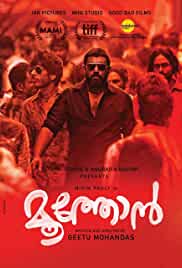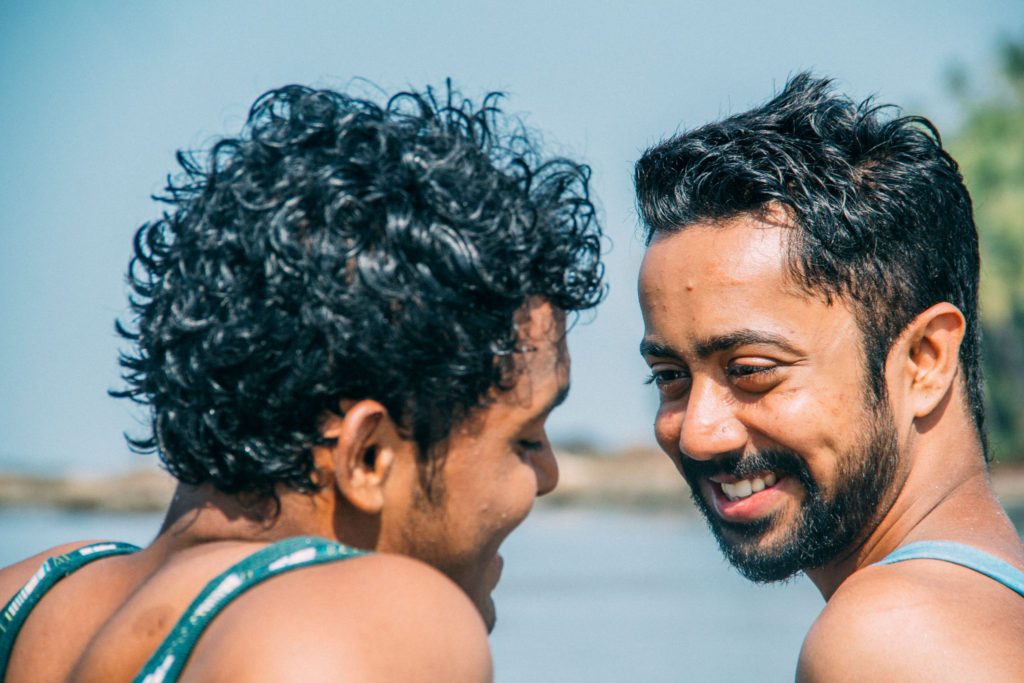The representation of masculinity in the 21st century is largely influenced by mainstream Bollywood movies, with some exceptions, of course. When it comes to the representation of the LGBTQ+ community, regional cinema distinctively breaks off from Bollywood’s stereotypical portrayals by delving into the various levels of marginalisation.
Cinema is a powerful mirror for our society, which has the power to reach the masses, and in turn, can change how we view ourselves within said society. All cinema industries in India shy away from the representation of the LGBTQ+, that is from toying with their audience’s preconceived notions of sexuality. And when they choose to do so, they under-represent, misrepresent, and brush the verisimilitude under the carpet.

Source: IMDB
However, we do have a few filmmakers who take the “bold” move of exploring these unchartered waters. It is only now that regional cinemas are starting to get the limelight that they deserve, in contrast to the stereotyping that they’re often subjected to, which can be pretty insensitive and demeaning.
In recent times, there have been movies that have tried to shed light upon the “taboo” topic of the LGBTQ+ community. Let’s look at this through two Malayalam movies. 2019’s Moothon by Geetu Mohandas is one such endeavour that has borne fruits. The story revolves primarily on gender identity and love. The exploration of a gay relationship is represented through tender affection and is true to its sensitive essence, something which cinema has not been able to achieve on the big screen in India with such compassion and finesse. The reaction to this prohibited romance in the society of the small island of Lakshadweep and the tragic repercussions of shame, guilt, and retribution form the storyline. This breaks away from the stereotypical representation of the LGBTQ+ community, which is often portrayed as effeminate people who act as comic relief.
A more “raw” approach can be seen in Jayan Cheriyan’s film, Ka Bodyscapes. An anomaly, it has attempted to portray the challenges faced by homosexuality and misogyny in a holistic manner, in order to, well, make it mainstream. The creative weaving of issues like class and community oppressions with that of sexuality, patriarchy, sexual orientation, and moral policing showcases the genius of the filmmaker in his craft, an approach that is largely unprecedented. The physical space fluxing into the psychological through closed claustrophobic spaces aptly represents the unnerving reality the community feels on a quotidian basis.

Source: Moviegalleri
Lokesh Kumar’s En Magan Magizhvan (which translates to “My Son is Gay”) is the first gay-oriented movie that has surfaced itself in Kollywood i.e. Tamil cinema. It revolves around the story of Lakshmi and his son, Varun, who comes out to his mother, and the tempestuous episode that entails into a denouement that brings two different worlds of lived realities together. Homosexuality as a topic itself has never been dealt with in Kollywood. This is the first film that attempts to do so in an earthly manner that captures the vulnerability and innocence of love as it is.
A more recent, “mainstream” representation that has received much appreciation and applause is Vijay Sethupathi’s portrayal of a trans woman in Thiagarajan Kumararaja’s Super Deluxe. The various forms of injustices, discrimination, and vulnerabilities are portrayed efficiently and flawlessly by Sethupathi. While some applaud Sethupathi’s performance, others have critiqued him for portraying transwomen in a negative light. When male actors appropriate the sexuality, body, and gender identity of a transwoman, it reinstates the wrong yet popular perceptions of them just being men in drag or “really only men”.
Rituparno Ghosh’s Bengali film Chitrangada: The Crowning Wish is based on the tale of Chitrangada from the Mahabharata, who falls in love with Arjuna the moment she sees him after being brought up as a man throughout her life. Rudra is a choreographer who struggles with his gender identity and instantly falls in love with Partho, a druggie percussionist. This film portrays why having a family is so important for queer people and gives a classic example of how transwomen are treated.

Source: IMDB
How we see, understand, and ascertain our views on trans women, or for that matter, all of the LGBTQ+ community has a lot to do with their portrayal in pop culture. We are all aware of the fact that not everybody tries to self-educate by reading more. Cinema and visual media are a quick-fix and a topic as fragile as that of the LGBTQ+ is something which has to be dealt with sensitivity and delicacy.
Indian web series have undergone a revolution due to the existence of several OTT platforms like Netflix and Amazon Prime. The climate of such series has changed from tense kitchen politics involving Rasode mein kaun tha? to the portrayal of women who have a sense of purpose and better prospects for jobs.
Cuckoo in Sacred Games is an example of a transwoman who is considered an equal and it is delightful to see her confidence. However, a middle-class working woman cannot possibly relate to the web series Four More Shots Please!. Not everyone is privileged to attend a high-end bar every weekend with their female friends. While trying to break several patriarchal barriers, FMSP! inevitably reinforces classist aspirations.
Another factor that brings about a change in the production of various forms of cinema is the audience. Ultimately, it is the audience who decides the fate of every film that is released. The reason why we have movies like Dabangg and Housefull (part of the revered “100 crore club”) is because we have a majority of our audiences supporting and invigorating such forms of “cinema”. On the other hand, we see movies with engaging and relevant stories, indomitable actors, and erudite filmmakers not gaining the acknowledgement, applause, and appreciation they deserve.
As a result of masala movies being the norm, major forms of cinema that promulgate important lessons, thoughts, and beliefs that affect our lives on a daily basis often do not make their way to mainstream cinema. Consequently, society internalises a narrowed perspective of the world, as we see it. Thereby, it becomes imperative for us, as the audience, to help meaningful cinema find the light of day in order to make it the norm. We have to acknowledge the power vested in cinema as means to our ends, which is to make our society inclusive, understanding, and appreciative, irrespective of class, colour, creed, gender, culture, religion, or any forms of discrimination.



This is a topic that deserves the limelight and dialogue that this article provides so as to make it the new normal and remove the stigma attached. Well done
Well written….